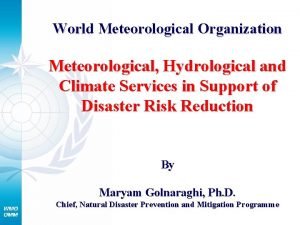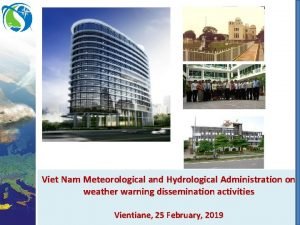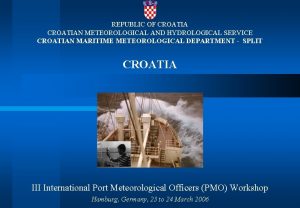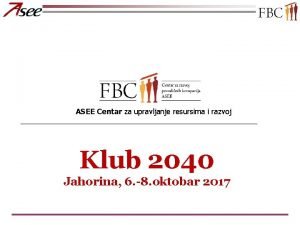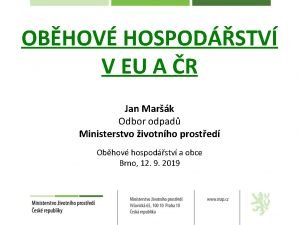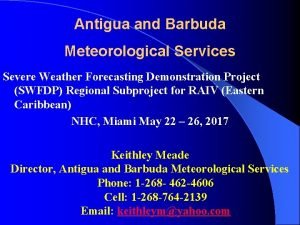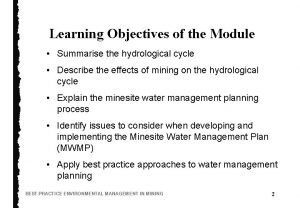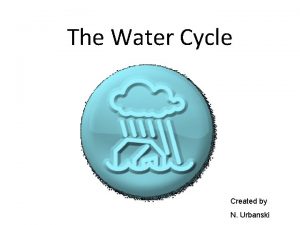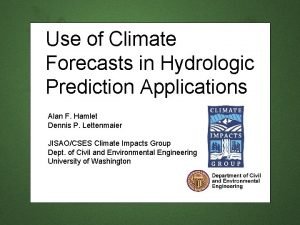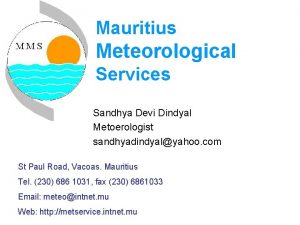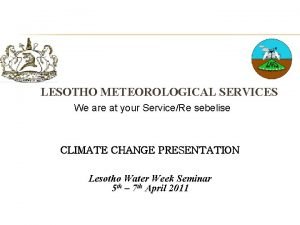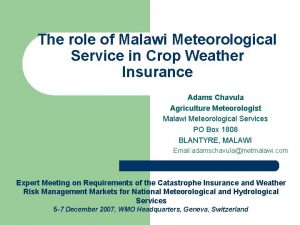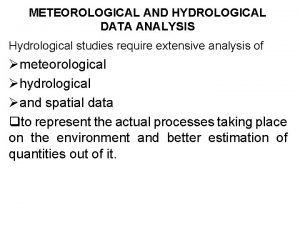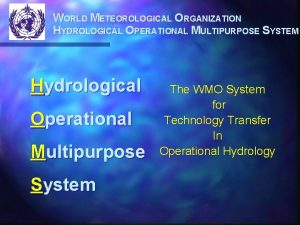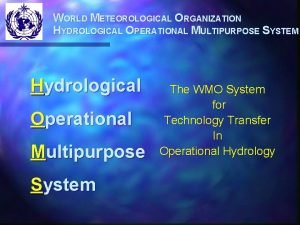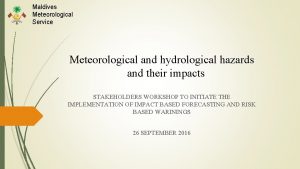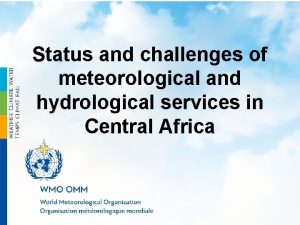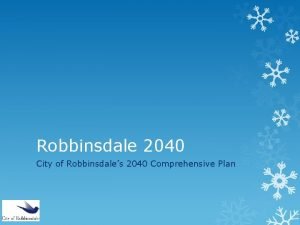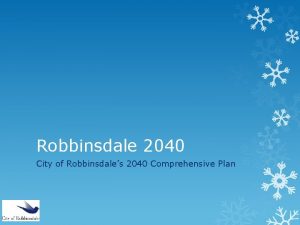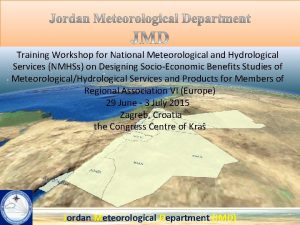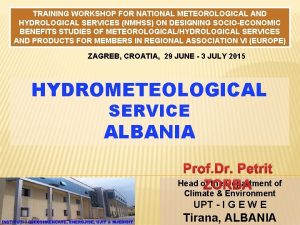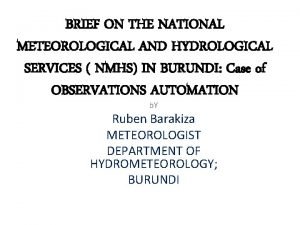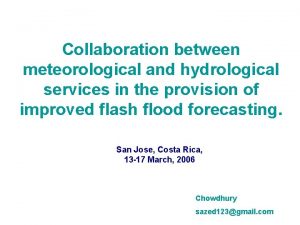Requirements for Meteorological and Hydrological Services in 2040













- Slides: 13

Requirements for Meteorological and Hydrological Services in 2040 Global megatrends

The world in 2040? Future State 2030 (KPMG, 2015) • Global megatrends impacting governments and citizens While they are highly interrelated, the megatrends can broadly be grouped into trends reflecting changes in the status and expectations of individuals, changes in the global economy and changes in the physical environment.

#1 Demographics • Higher life expectancy and falling birth rates are increasing the proportion of elderly people across the world, and challenging the solvency of social welfare systems including pensions and healthcare. • Some regions are also facing the challenge of integrating large youth populations into saturated labor markets.

#2 Rise of the individual

#3 Enabling technology • ICT- based technologies have enabled R&D and growth of technologies in many fields such as applied science, engineering, health and transport. • Exponential growth in the volume and speed of access to information can generate new markets and challenge existing institutions. • While developed countries may have greater access to many of these technologies now, many innovations provide ‘leapfrog’ opportunities for less developed countries to capitalize on new and changing markets.

#4 Economic interconnectedness • The interconnected global economy will see a continued increase in the levels of international trade and capital flows, but unless international conventions can be strengthened, progress and optimum economic benefits may not be realized.

#5 Public debt

#6 Economic power shift

#7 Climate change • By 2050, costs of extreme weather could reach up to 1% of world GDP pa. • With warming of 3 -4 C, up to 200 M people could become permanently displaced due to rising sea levels, flooding and droughts.

#8 Resource stress

#8 Resource stress/2 • "If nothing is done, we will run out of water before we run out of oil"

#9 Urbanization • The number of megacities (pop. 10+ million) will increase from 20 today to 35 in 2025

Implications for NMHSs: Services demand driving WIGOS • Technology and data, capability and uptake – NMHSs and users, ability to access and use information • Technology and information convergence – integration and seamless • Agriculture and food security – demand, integration, agility in use of services and information, planning for reliable and resilient production • Water – quality and quantity, manage/control use, plan/security of supply • Urbanisation – impact of weather, esp. severe weather and heat, air quality, climate change & variability on (e. g. ) infrastructure management, transportation, energy demand, construction, tourism, health, well-being. . • Communications – more accessible, lower cost easier to transmit/share data, spectrum challenges • Environmental management – measure/monitor to manage • Increased demand for 'short-fuse' services - extreme weather, DRR • International collaboration and connectedness – • Public and private sector – find 'right' balance, data and services, PPP
 National meteorological and hydrological services
National meteorological and hydrological services Vietnam meteorological and hydrological administration
Vietnam meteorological and hydrological administration Croatian meteorological and hydrological service
Croatian meteorological and hydrological service Klub 2040
Klub 2040 Klub 2040
Klub 2040 Cirkulární česko 2040
Cirkulární česko 2040 Antigua met office
Antigua met office Hydrological
Hydrological Condensation process example
Condensation process example Four parts of the water cycle
Four parts of the water cycle Hydrological prediction center
Hydrological prediction center Mauritius meteorological service
Mauritius meteorological service Lesotho meteorological services
Lesotho meteorological services Malawi meteorological services
Malawi meteorological services
